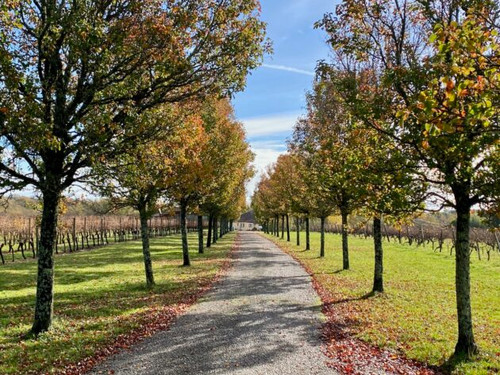November review and photo journal
Posted by Gavin Quinney on 30th Nov 2023
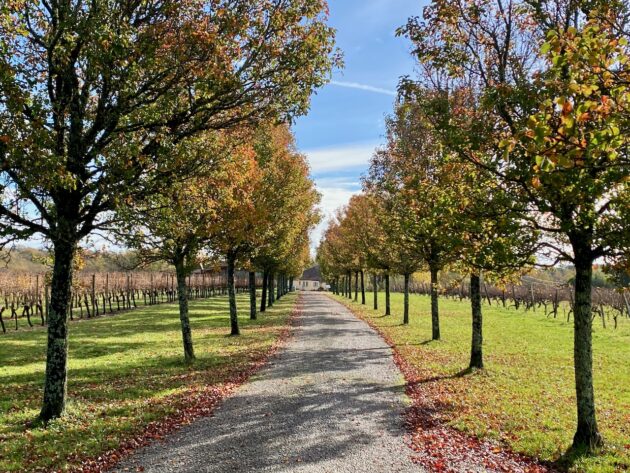
Not that we habitually write our end-of-month newsletter at the last minute – good Lord, no – but we’ve been blending the 2023 whites and rosés this morning. And really good they are too (even if we would say that). We haven’t mixed all the wines from the stainless steel vats together en masse just yet but we have checked what fits together – with the help of an assortment of large test tubes and one of Bordeaux’s finest consultant enologists or oenologues (as in someone who knows what they’re doing). We’ll be bottling those wines here in February and there’s much to prepare before then.
After a biblical amount of rain in the vineyard in November our attention now turns to Advent and Christmas. Watch out for our suggestions of non-wine gifts for wine lovers, coming soon, and we also have wines, of course.
All the best
Gavin & Angela Quinney
A tasty crop in 2023
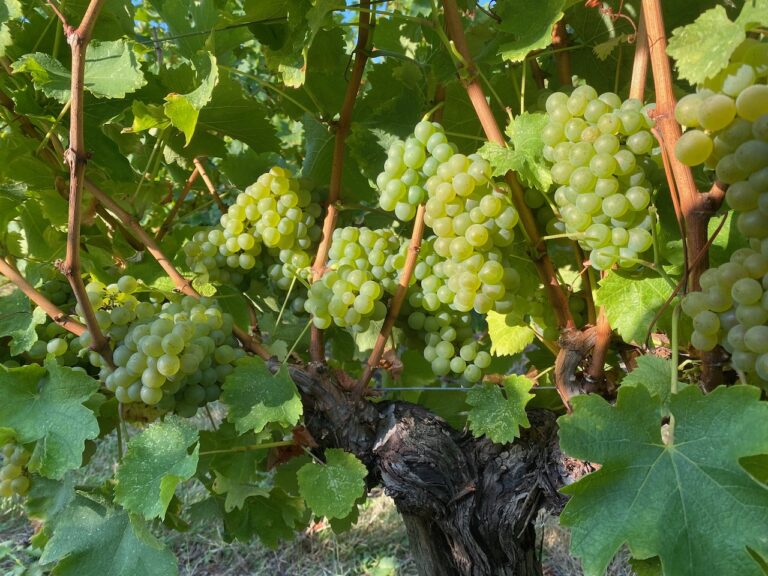
Right now we have to declare how much wine we’ve produced this year to the authorities, so that French customs and others can keep tabs on what we’ve got in our winery and cellars (for tax purposes, fraud and so on) and to make sure we haven’t made more than we’re allowed. That might sound odd but there are strict rules about the amount of wine we can produce per hectare of vines, as with every grower/winemaker in any ‘appellation‘ (a clearly identified geographic area in France, whether large or small).
Contrary to official reports this month of ‘drought and disease see wine production fall to 60-year low’ globally in 2023, we’ve actually seen a really good crop this year at Château Bauduc, for both volume and quality.
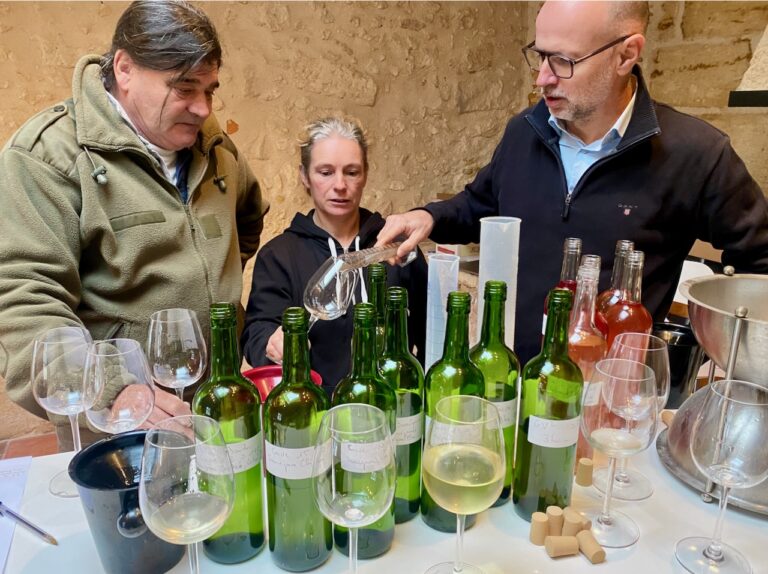
Mercifully no drought and disease here, thanks to diligent and well-timed work in the vines by Daniel and Nelly, above right and centre. We’ve made 63.4 hl/ha (hectolitres per hectare) of dry white against a maximum quota of 65hl/ha, 72.6hl/ha of Crémant v a max of 75hl/ha – making 120,000 bottles combined – plus 46hl/ha of rosé and 47hl/ha of Bordeaux Supérieur red, the max being 50hl/ha (rosé and red being over 100,000 bottles combined). Our Sauvignon Blanc and Rosé are, by some margin, our biggest production wines, which is unusual in Bordeaux where the stats consistently show 85% red being made each year, plus 10% white and 5% rosé.
More on the back label
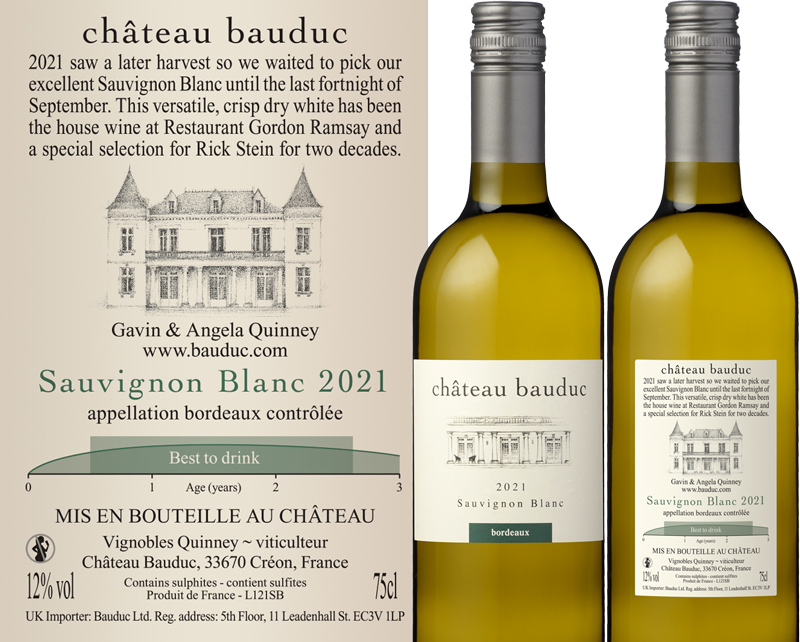
We’ve never quite understood why so many quality growers, especially in France, don’t have a back label on their bottles which explains something about the wine or at the least shows that they really give a fig. Granted, at the top end they don’t need to – after all, it’s hard to see Petrus sticking ‘100% Merlot’ on a label any time soon and the guff you read on some back labels can be thoroughly off-putting.
The amount of statutory information on labels is increasing, however. For the EU we’ll have to put the mandatory list of ingredients (eg grapes…) and nutritional information via a QR code, and for the UK we have to add the name of the UK importer or the Food Business Operator (the what?) to the label. We first had to do this last bit by 30 Sept 2022, though the UK Government inexplicably pulled the requirement a few days before the deadline. Yet now it’s back in force for 2024. It’s fine for the big boys, and for us in truth, but unnecessary red tape for smaller independent producers and merchants. (Will the UK be the only country in Europe to have the name of the local importer on the label for every wine?)
We might add a second QR code for customers to see more information on the wine (you can’t distract readers from the list of ingredients with any marketing guff, apparently) and as we have to get our labels printed in January it would be useful to hear of any ideas of what you’d like to see on them. It was by chatting with customers some years ago (and being invited to see a private cellar which was full of old vintages of rosé) that we designed the infamous Bauduc ‘best to drink’ graphic.
We’re redesigning our back labels in December so please email us with any suggestions using this link.
Cuvée Britannique?
We were relieved, along with the rest of the UK wine trade, that there wasn’t another increase in UK duty on wine in the Chancellor’s Autumn statement this month. There were strong indications that there would be, despite the 20% increase in duty on wine as recently as August (and the full impact of the 53p rise has yet to be seen as everyone stocked up). Perhaps he realised that 70% of a £5 bottle being UK tax, and 50% of an £8 bottle being UK tax (£2.67 duty plus £1.33 VAT), was quite enough for the moment.
To put the UK duty and VAT into context, if we were to sell all our 2023 production (see above) in England and Wales at, say, £11 a bottle, the duty and VAT on each of those 222,000 bottles would be a little over £4.50. On a revenue of £2,442,000 inc VAT, £1 million would go on UK duty and VAT payments and, on top, around £400,000 in shipping, warehouse and delivery charges.
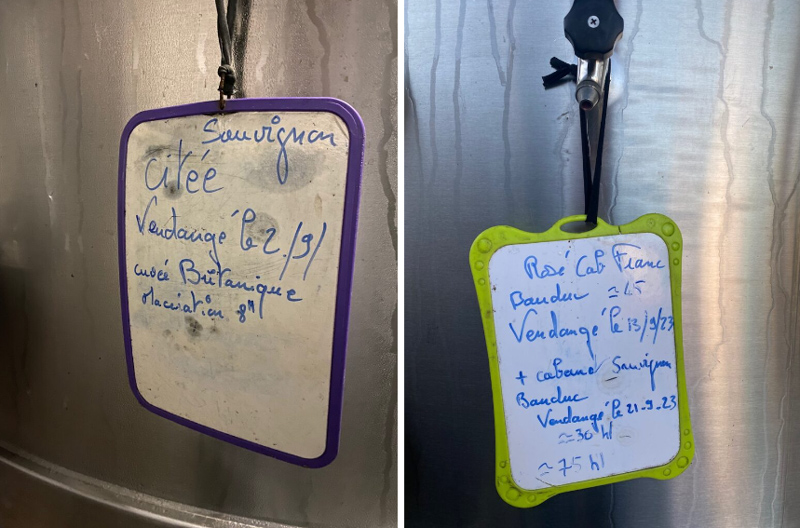
There is a link to this and our blending session this morning and I’m pleased to report that we have made the best Sauvignon Blanc we could, rather than let the tail wag the dog as it were. At one stage we had a separate tank marked ‘Cuvée Britannique’ because it was the only vat that came in naturally at under 12% alcohol by volume (we neither add sugar to increase the potential alcohol nor water to lower it – the first one is allowed in France but definitely not the second).
Back in early September, I cleared an idea with my helpful guru at the Wine and Spirit Trade Association in London (of which we are members through our UK import business for Château Bauduc). The difference in UK duty between a wine labelled at 11.4% abv and 11.5% abv is currently 28p a bottle incl VAT. That’s quite an anomaly.
What has slipped under the radar (since I published my Guide to UK wine duty) is that for the UK market you can now label a wine using every decimal place (eg 11.4% or 11.3%, with a tolerance of 0.5%), rather than the half a percent in the EU (eg 11% or 11.5%, again with a tolerance or margin of error of 0.5%). This was a Defra initiative, by the way, not the Treasury’s.
This was my request to the WSTA by email:
‘I am considering a version of our Sauvignon Blanc for the UK (only) market. We harvested this week. Before I make up the blends, is it permissible to make a wine at c 11.7°/11.8°C and label it for the UK market at 11.3/11.4?’
This was the reply.
“In short, I think the answer is yes, you can make a wine at c 11.7°/11.8°C and label it for the UK market at 11.3/11.4.
‘If the analysis of the wine is consistently in the 11.6% – 12% range, then you would take it to be 11.8%.
- ‘For the EU market, that product could be labelled as 11.5% or 12%
- For the GB market, you could label it at any tenth of a degree between 11.3% and 12.3%
- You could not go to 11% in either market.
- If the product was intended to go to both EU and GB markets you would label it in accordance with EU standards, which would also meet the UK rules.
- For the purposes of the new UK excise duty rates, you would probably choose to label it at 11.3%, unless this was going to be seen as a marketing disadvantage.
- The HMRC guidance in PN163 has now been amended to reflect this.’
The upshot is that the Government’s dual ‘Brexit benefit’ of leaving the EU means you can now label wine using every decimal place AND the duty is now levied based on the actual level of alcohol, using every decimal place. So on 1 August this year, we swapped just 3 levels of duty on wine – still, sparkling and fortified – for more than 200 duty bands on wines from 1.3% to 22% abv from 1 February 2025 (of which 70 different levels of duty will be possible between 8% and 15%).
Even this week, the Exchequer Secretary to the Treasury, Gareth Davies MP, was quoted as saying that the Government “took a decision to reform alcohol duty based on the ability to do it”, as a result of the Brexit referendum. He argued that the EU duty system, which Britain was forced to adopt prior to Brexit, was “very complicated, disjointed, and it wasn’t consistent”.
“We’ve been able to simplify our duty system in accordance with public health priorities for the first time, and simplify it in the sense that the more alcohol, the more duty.”
‘Simplify our duty system’ with over 200 different rates of duty on wine? Dear me.
Rant over.
A November photo journal
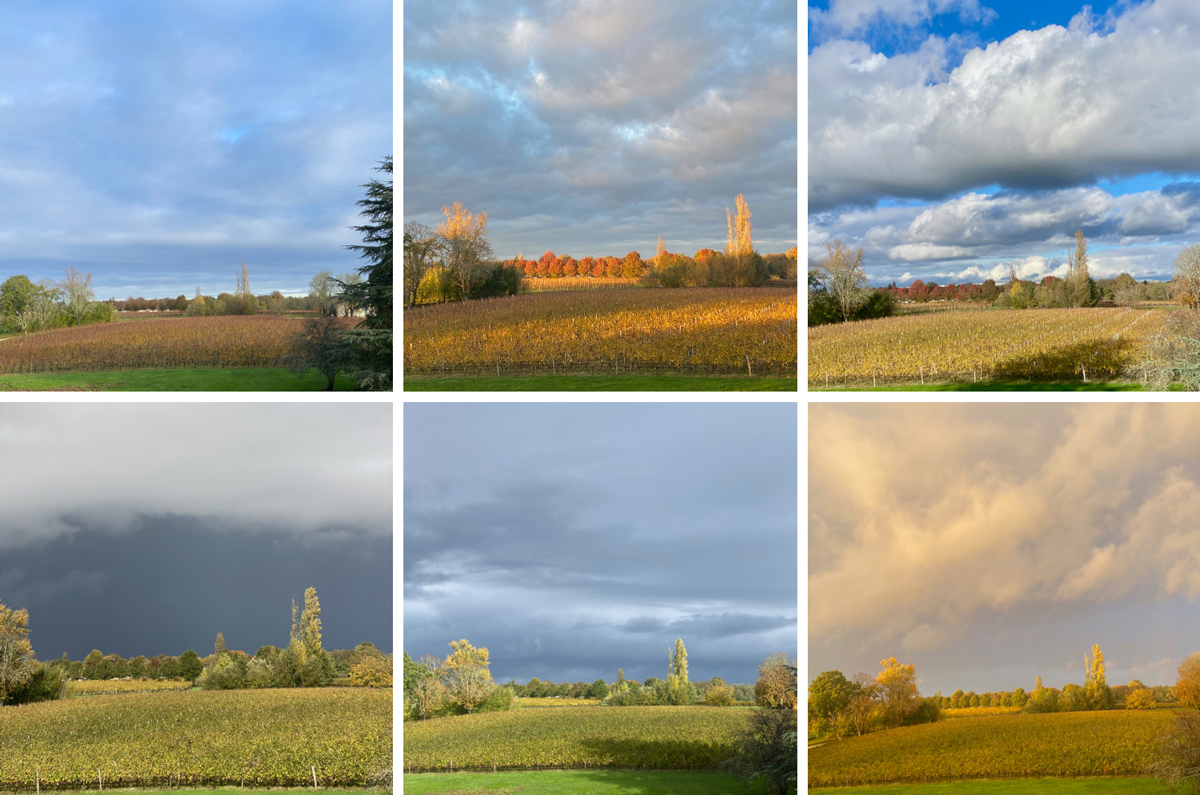
A room with a view at Bauduc, overlooking the Merlot. These were all taken this month.
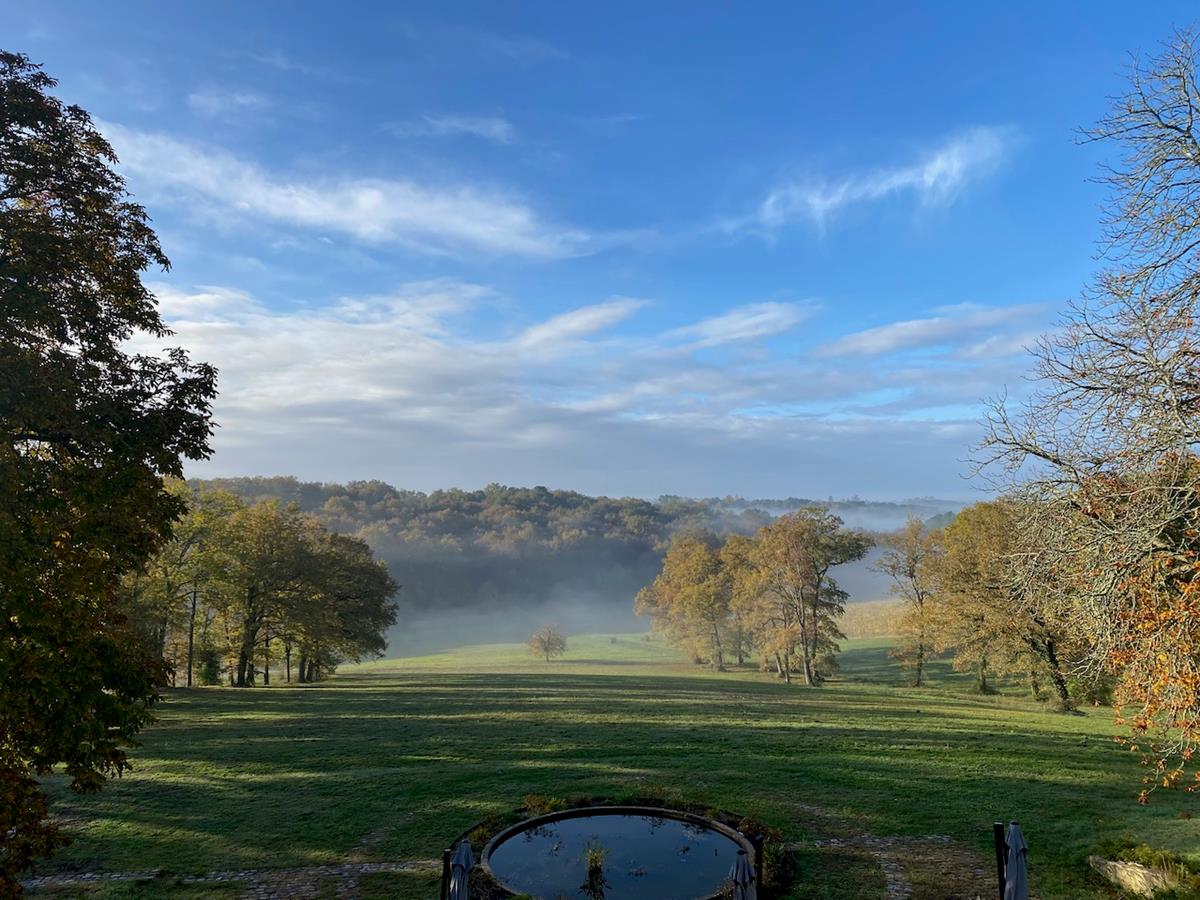
From the South front, 11 November.
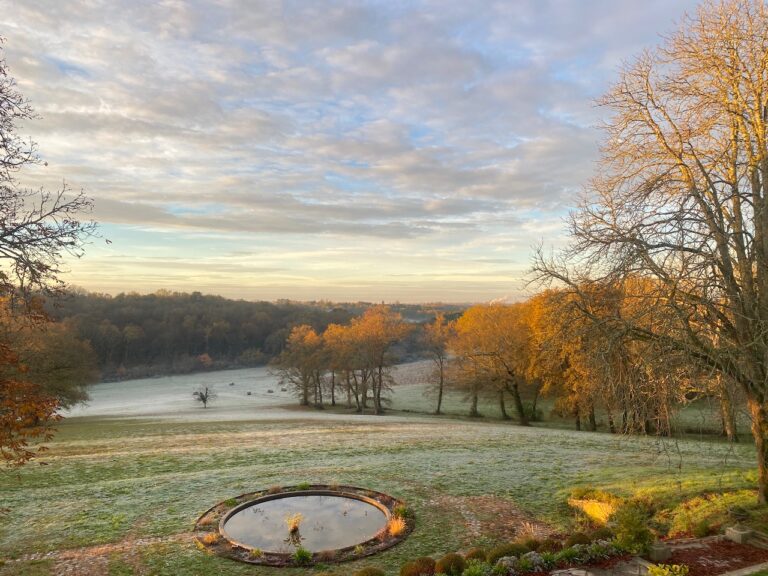
29 November 2023. A cold snap is great news for the vines, as they begin their winter retreat. And we can start pruning.
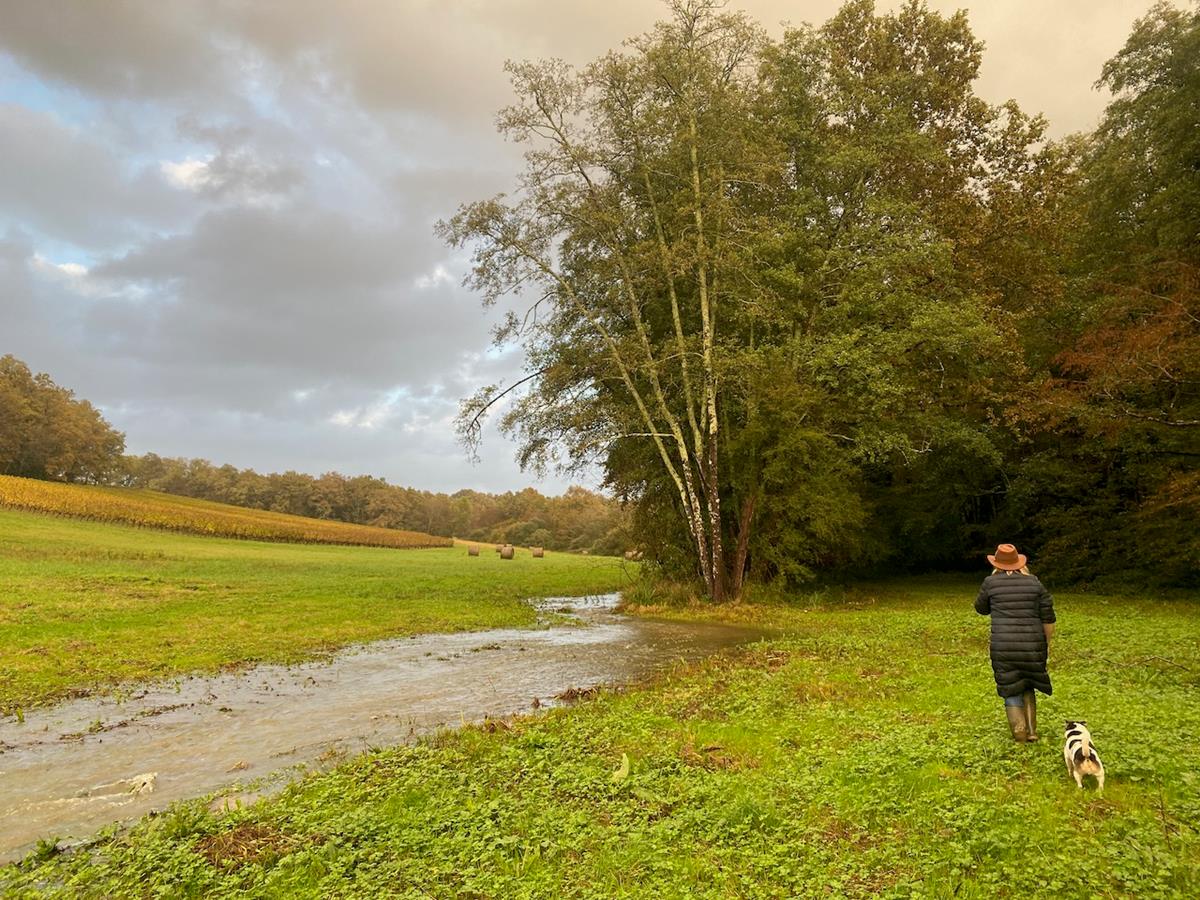
At the foot of the slopes and a temporary stream during the deluge of rain, 4 November.
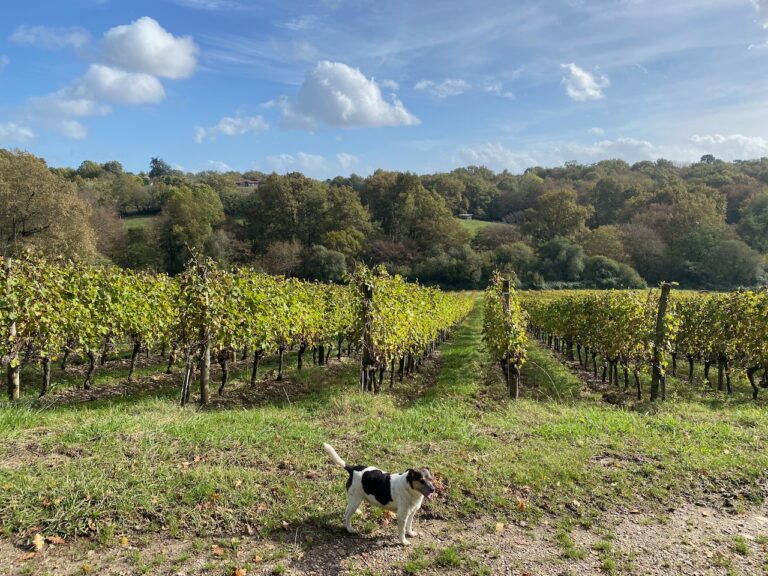
Pavie above the Sauvignon Blanc, 1 November.
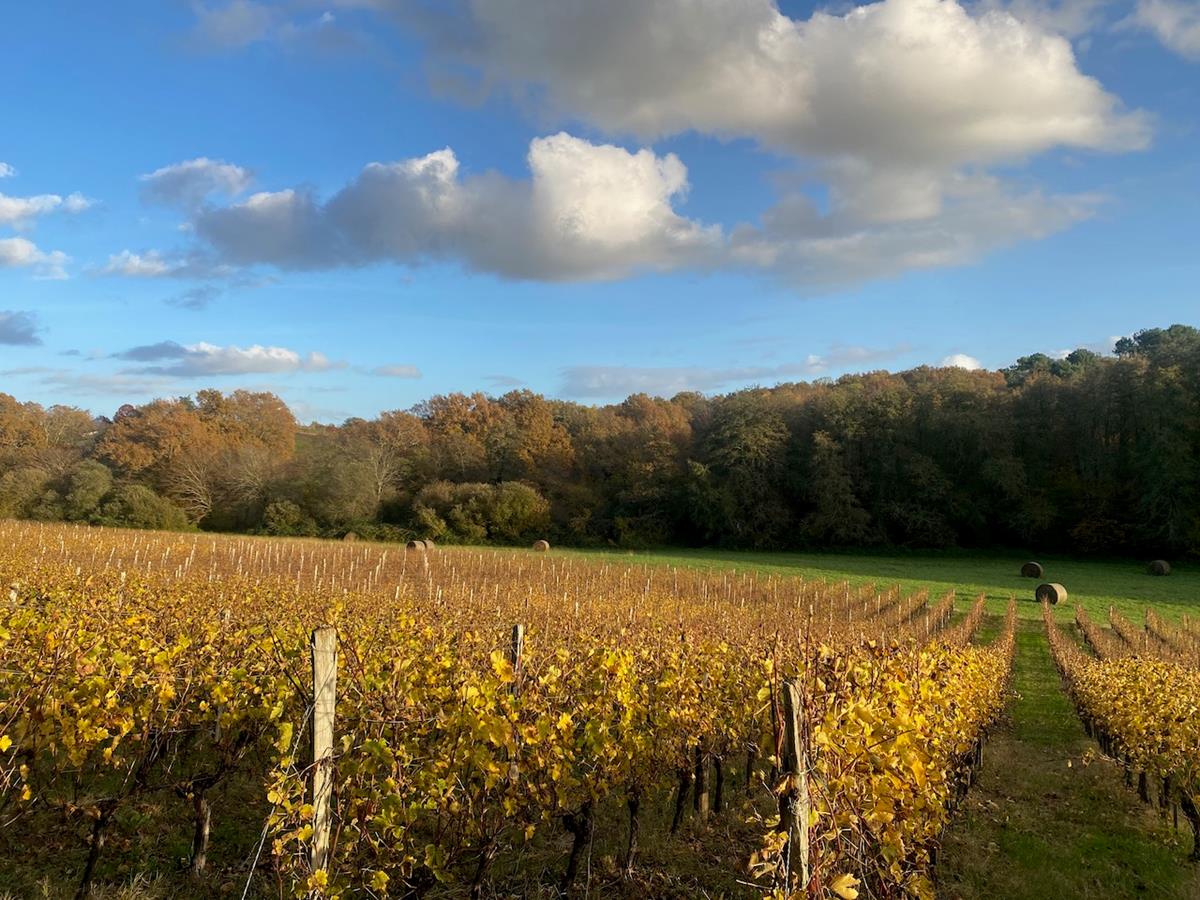
15 November, Sauvignon Blanc.
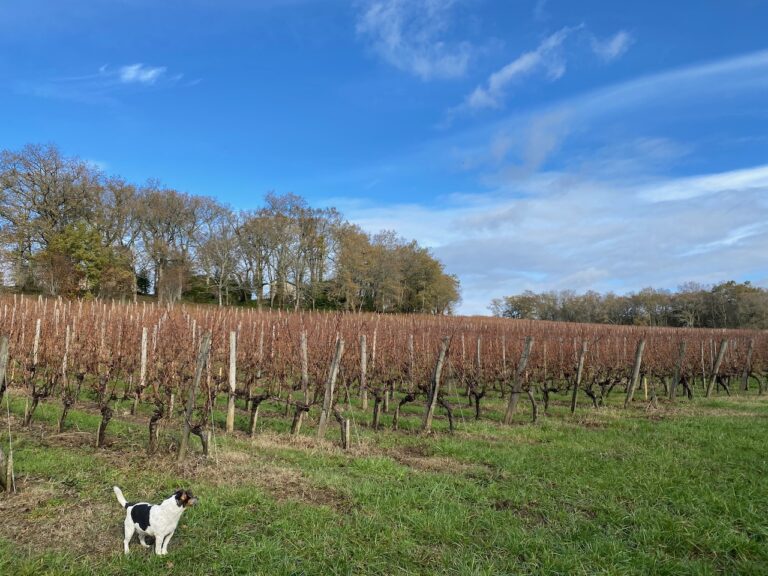
Pavie below the Sauvignon Blanc, 29 November.
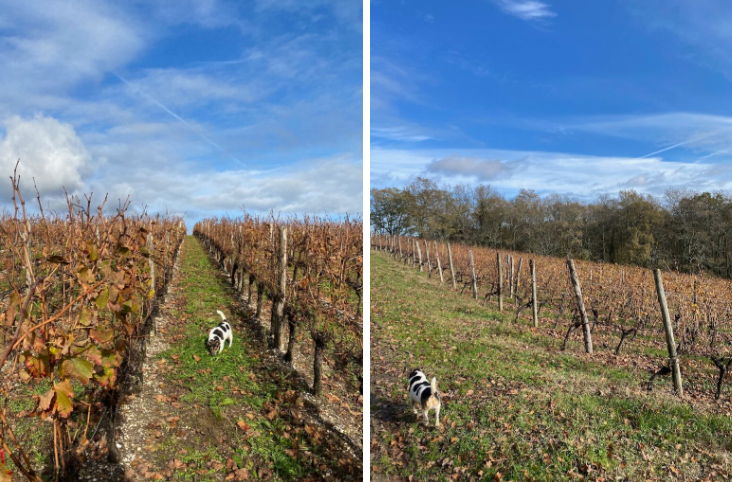
29 November, Merlot and Sauvignon Blanc.
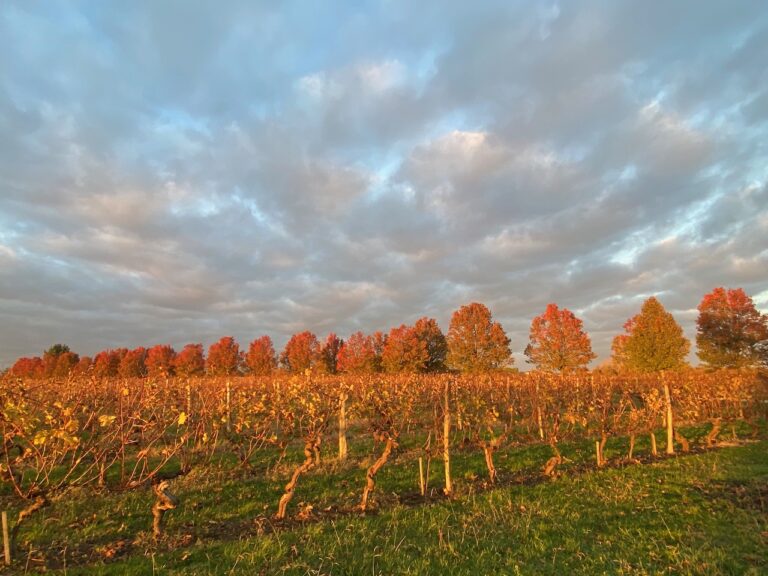
The trees alongside the drive and Les Trois Hectares – old vine Sémillon.
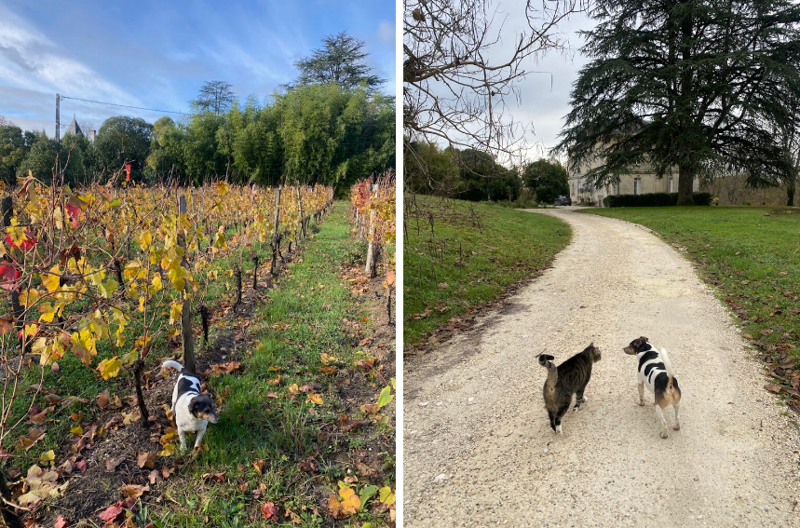
Merlot by the château and farmhouse, 29 November. Goose the cat and Pavie having a chat.
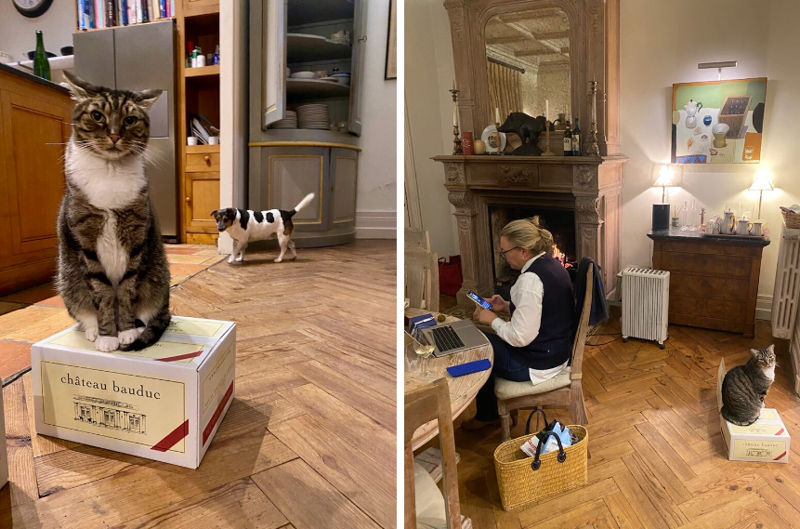
Goose is very at home on a box of Bauduc. No really. Accompanying Ange at work.
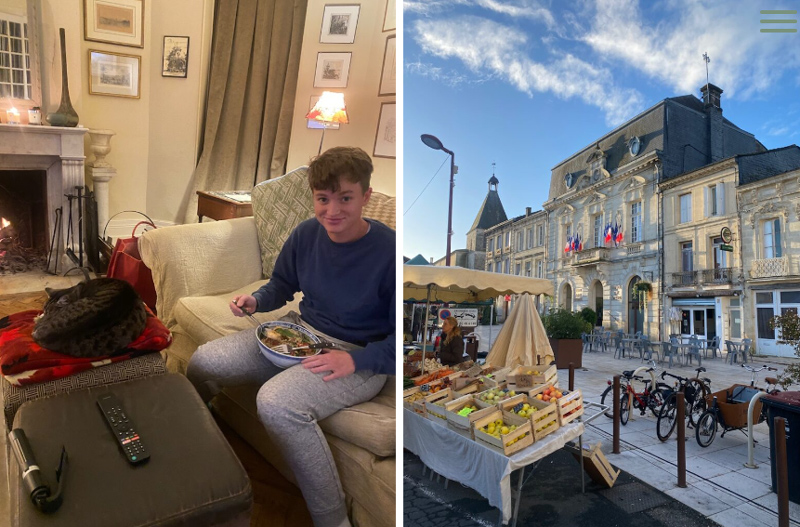
Goose with Bugs, who was at home for a few days. Créon market on the right.

We really enjoyed a spectacular light show with live classical music in the Cathedral in Bordeaux. An hour was the perfect length.

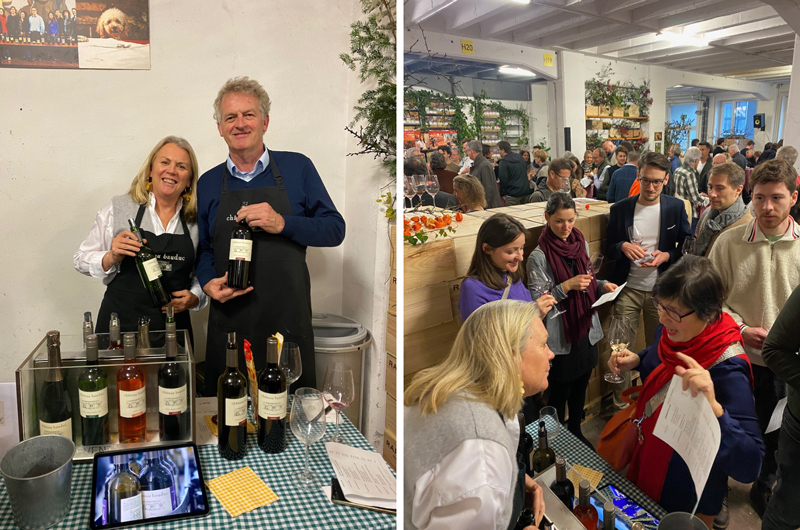
At a wine tasting in Zürich with our importer Philipp Schwander. We showed our Crémant, Sauvignon Blanc, Rosé and 2020 Red.
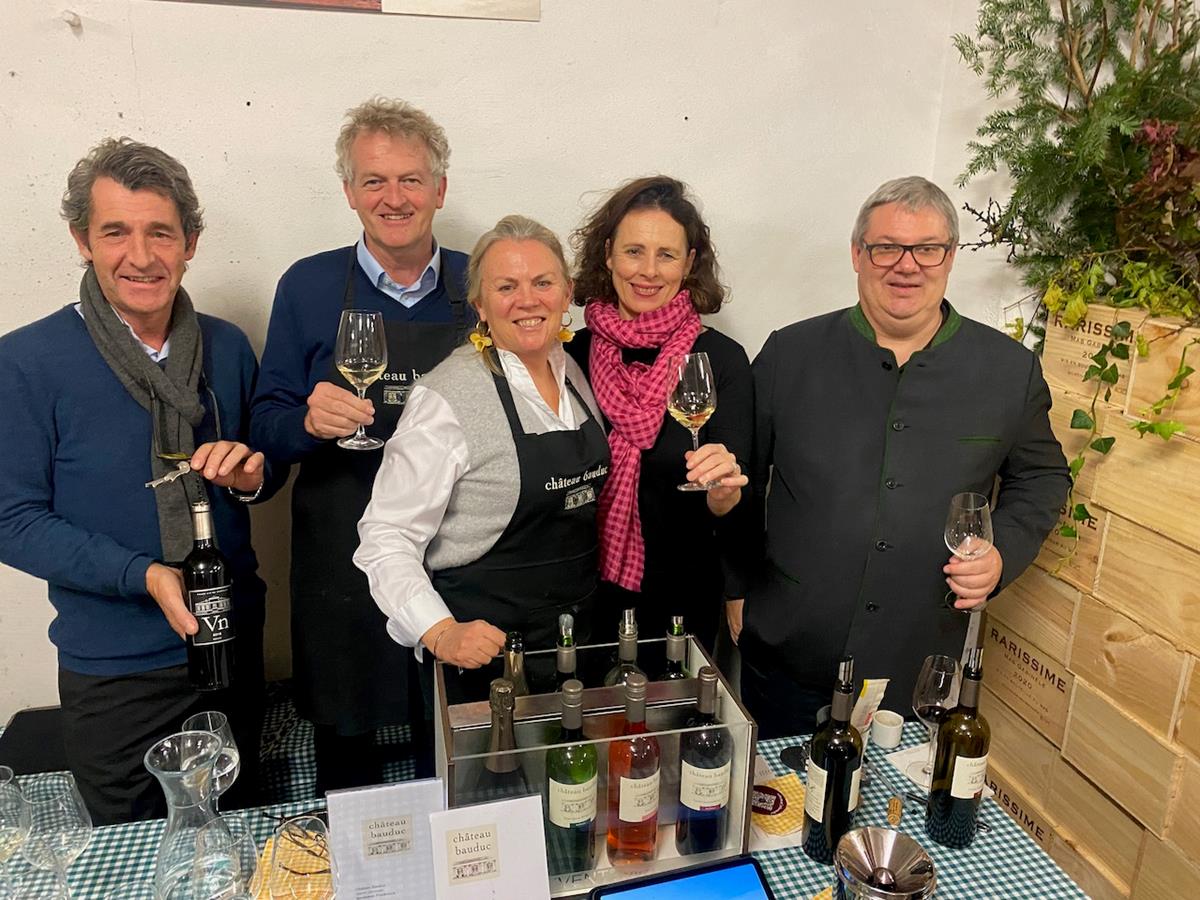
With fellow Brits from Bordeaux, our lovely friends Andrew McInnes of Château Ramafort and Château La Cardonne in the Médoc (whom we introduced to Philipp, right) and Nicola Allison of Château du Seuil in the Graves. A British blend from Bordeaux, in fact: Andrew is a Scot, Nicola is Welsh, Angela half Welsh, half English, and me English.
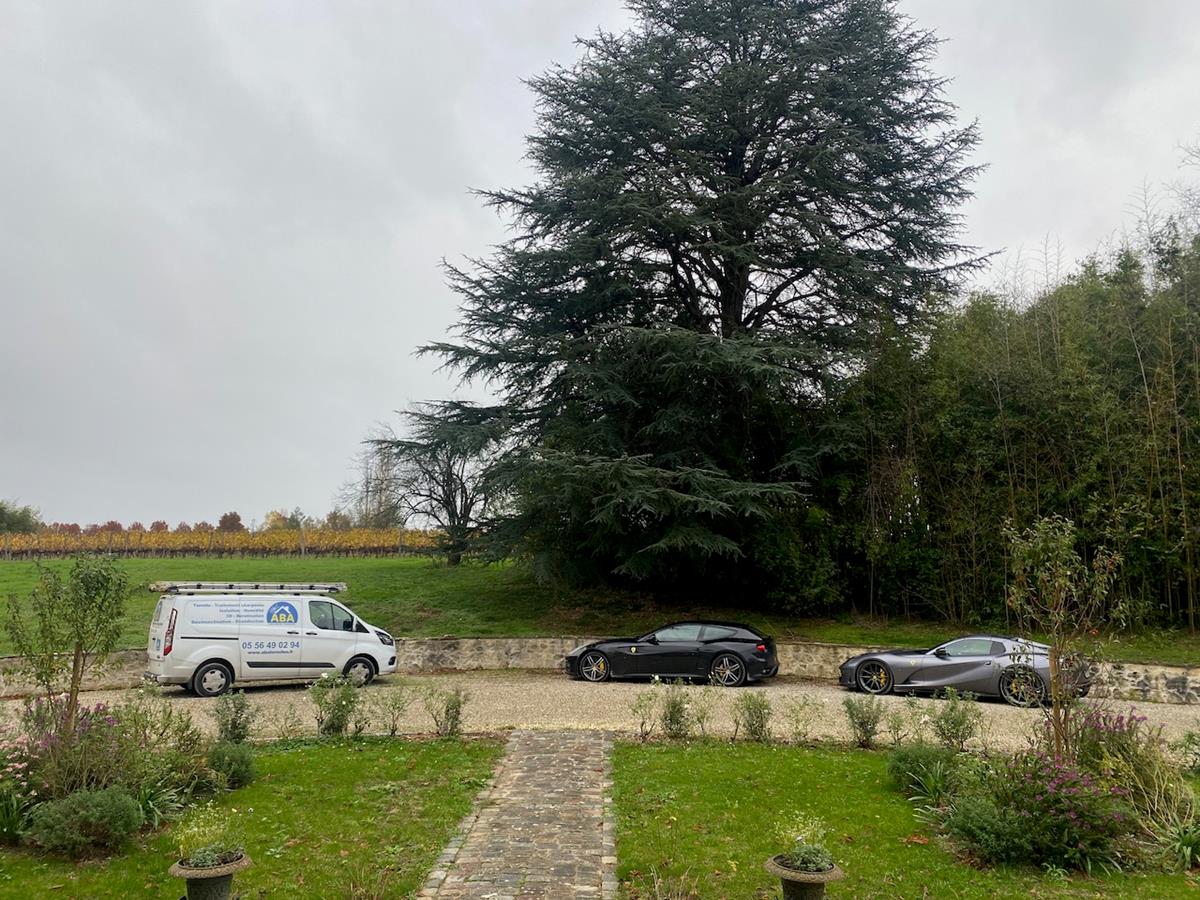
A typical scene at Bauduc. An artisan who’s come to check our old floors for any risk of wood-eating pests. And two Ferraris, whose owners have made the short hop from southern England to come and taste some wine.
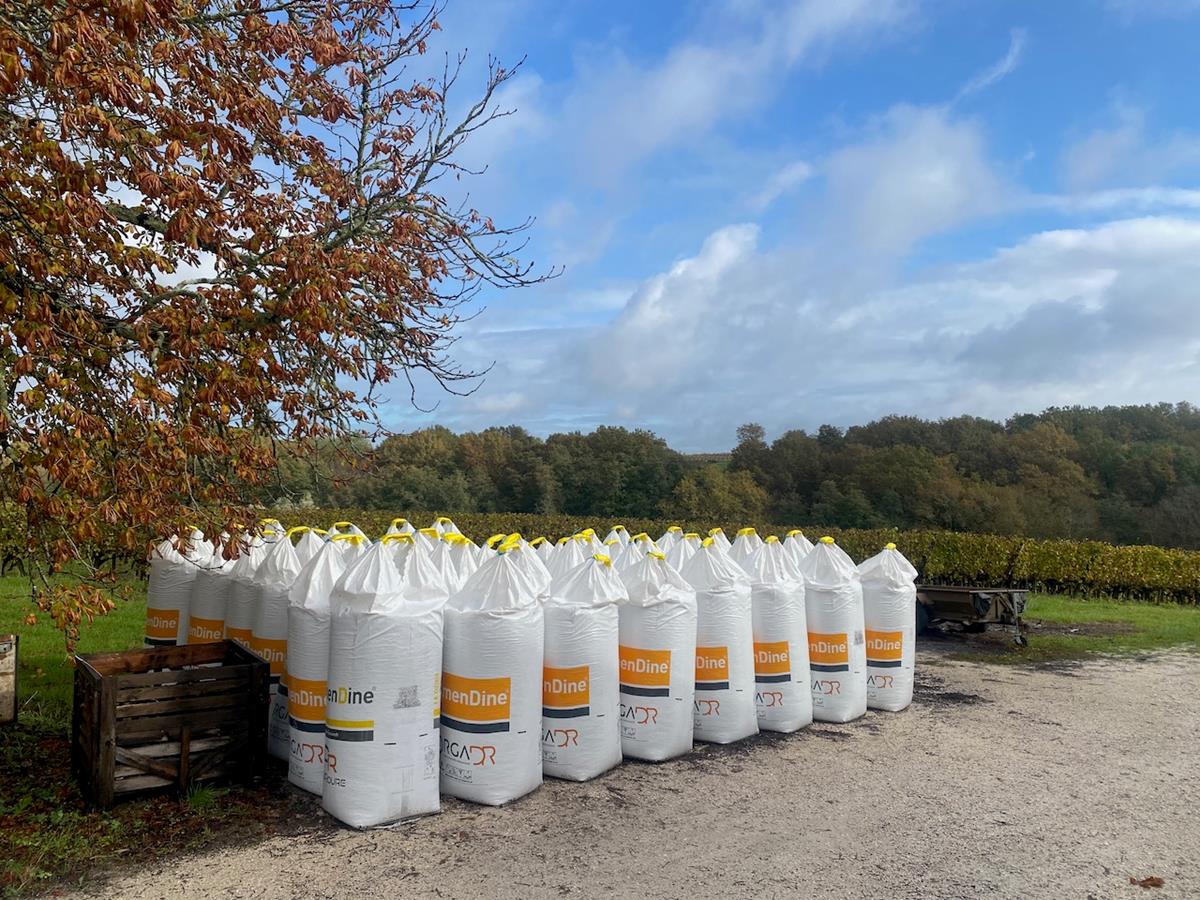
Ten grand’s worth of organic fertiliser (not the most romantic way to think about it, perhaps). The start of the work for the 2023-2024 season marks the transition from our 25th harvest in 2023 to our 25th vintage in 2024. Our first vintage was in 1999 when we arrived just in time for the harvest, and bought the bunches on the vines as it were. 2000 was our first full year in charge.
Onwards and upwards.

